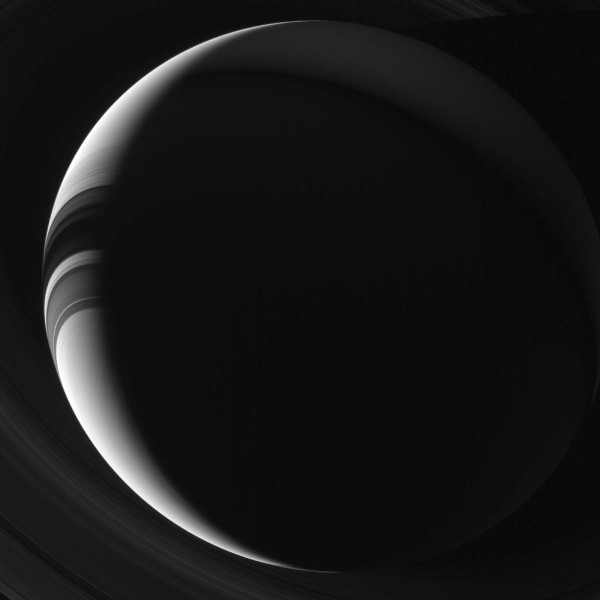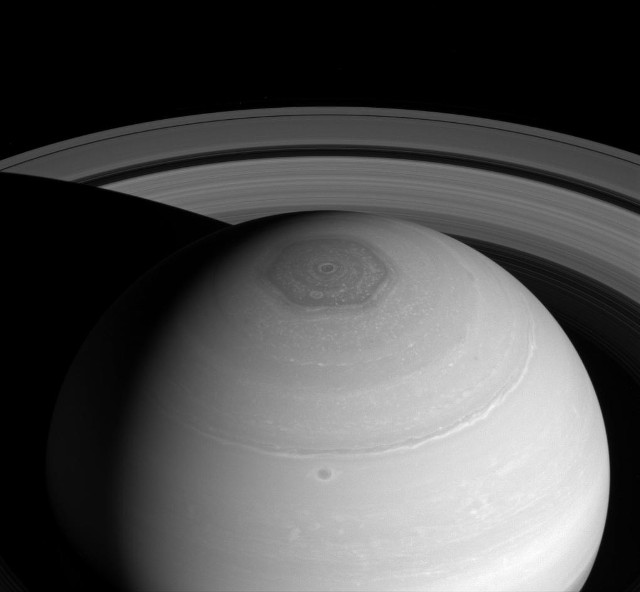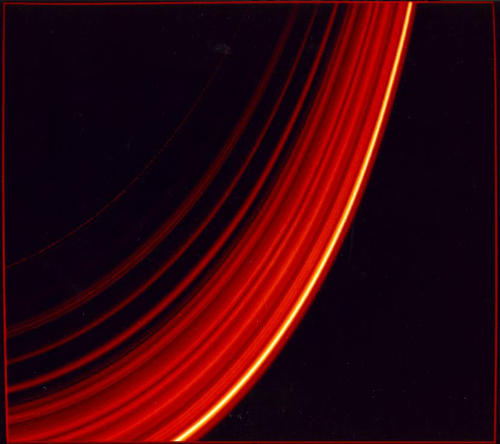
The Cassini Orbiter provides us with a view that is impossible to get from Earth. From a distance of approximately 2 million km, it is able to capture Saturn in this state where only a thin sliver of the planet is lit by the Sun, while the rest is essentially dark for its “night” (except for some faint illumination where its rings are reflecting some light back onto the planet). The lit portion looks a lot like the crescent shape that we regularly see of our Moon.



